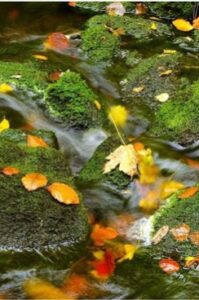The interactions between land use, substrate quality and consumers on global patterns of leaf litter decomposition in stream ecosystems.
Co-investigators (listed alphabetically)
Luz Boyero1, Aydee Cornejo2, Javier Perez1, Christopher Swan
1Ikerbasque, Basque Foundation for Science, Bilbao, Spain
2Gorgas Memorial Institute for Health Studies, Panama City, Panama
The primary cause of biodiversity decline worldwide is habitat degradation. Given the tight relationship between biodiversity and various ecosystem processes, it is reasonable to predict that habitat degradation should also lead to changes in ecosystem functioning. However, this has not been explored on a large scale. An important ecosystem process in stream ecosystems is the processing of terrestrially-derived leaf litter from stream side vegetation. Breakdown of this material is largely a function of its chemistry (nutrients, secondary/structural compounds), macro- and micro-consumers, and environmental conditions. In stream ecosystems, changes in watershed land use from forest to agriculture, urban and plantation results in habitat changes in the stream environment. This is due to various factors. Changes in sediment mobility on the landscape due to agricultural activity leads to shifts in substrate distribution, which is important to species composition of invertebrate communities known to be important to regulating the processing of leaf litter. Impervious cover that characterizes urban landscapes disrupts the dynamic equilibrium of sediment flux, exporting more than that imported, driving river channels down and, as in agricultural streams, shifting substrate distribution. In addition, flow dynamics are altered, resulting in much more intense, shorter duration disturbance events than that experienced by forested streams. Furthermore, thermal regimes are altered in summer months as warm water is heated dramatically from impervious surfaces before exported to the stream environment. This has implications not only for the tolerances of invertebrate taxa, but also microbial decomposers as well. Taken together, it is expected that upstream land use should drive shifts in the processing of leaf litter decomposition, owing mainly to:
1. Altered flow regimes
2. Elevated temperatures
3. Shifts in habitat
4. Interactions with substrate (litter) chemistry

As such, we seek to answer the following questions:
1. Does leaf litter breakdown shift with land use – agriculture, urban, plantation, forest – systematically across the globe?
2. Do these patterns vary consistently with leaf litter quality?
3. Is there an interaction with exclusion of consumers?
Our approach is a large scale, distributed study embracing a network of more than 50 collaborators across the globe. Leaf litter breakdown of the same leaf species plus a local dominant species will be estimated in streams experiencing the impacts of four land use types: urban, agriculture, plantation (if available), and forest. Breakdown of leaf litter with and without access by leaf shredding invertebrates will be estimated, as will characterization of the local shredder communities. Results will be placed in the context of consistently measured environmental conditions (water physical, chemical conditions) and biome.
Related Publications:
- Boyero, L., …. C. M. Swan, et al. 2021. Latitude dictates plant diversity effects on instream decomposition. Science Advances 7(13):eabe7860
- Tiegs, S.D.,…C.Swan….and 151 others. 2019. Global patterns and drivers of ecosystem functioning in rivers and riparian zones. Science Advances. (51) eaav0486
- Seena, S.,…C.Swan….and 30 others. 2019. Biodiversity of leaf litter fungi in streams along a latitudinal gradient. Science of the Total Environment 661:306-315
- Boyero, L; Graca, M; Tonin, A; Perez, J; Pearson, R; Swafford, A; Landeira, A; Albariño, R; Alexandrou, M; Barmuta, L; Callisto, M; Chara, J; Chauvet, E; Colón-Gaud, C; Dudgeon, D; Encalada, A; Figueroa, R; Flecker, A; Fleituch, T; Gessner, M; Gonçalves Júnior, J; Iwata, T; Mathooko, J; McKie, B; Pringle, C; Ramirez, A; Swan, C; Yule, C. 2017. Riparian plant litter quality increases with latitude. Scientific Reports 7, Article number: 10562. doi:10.1038/s41598-017-10640-3.
- Boyero, L., R.G. Pearson, D.D. Dudgeon, V. Ferreira, A.J. Boulton, M.A.S. Graça, E. Chauvet, C.M. Yule, M.O. Gessner, R.J. Albariño, A. Ramirez, J.E. Helson, M. Callisto, M. Arunachalam, J. Chará, R. Figueroa, J.M. Mathooko, J.F. Gonçalves Jr., M. Moretti, A.M. Chará, J.N. Davies, A. Encalada, S. Lamothe, L.M. Buria, J. Castela, A. Cornejo, A.O.Y. Li, C. M’Erimba, V.D. Villanueva, M.d.C. Zúñiga, C. Swan & L. Barmuta. 2011. Global patterns of stream detritivore species richness: implications for biodiversity loss in changing climates. Global Ecology & Biogeography 21(2):134–141.